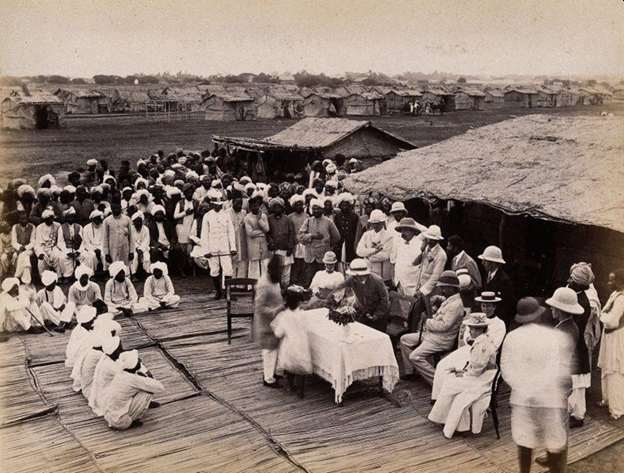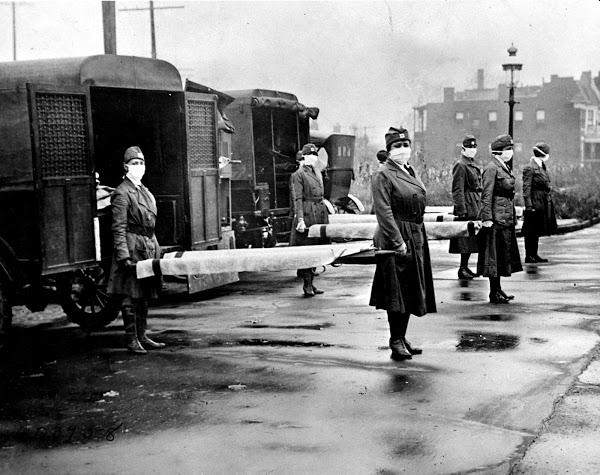Pandemics In History – 5: India And Pandemics

The Encyclopaedia Britannica says that long long back it was a maxim that the plague never appeared east of the Indus River. That is of course because then the origins of plague in eastern Asia had not been known. But the plague has been reported at different locations across India in the 19th century. The 3rd great plague pandemic in the world that spread from China in the late 19th century came to India on a ship to Bombay in 1896 and from there it spread to the rest of India. India accounted for 95% of the worldwide fatalities.
Bombay was the worst hit and the colonial government acted swiftly but repressively. To prevent contagion, those infected were forcefully taken to a special hospital on Arthur Road. Clothes and other objects suspected of being infected were burnt. Houses were disinfected or broken, commercial establishments were closed, pilgrimages and festivals were stopped.
Also Read: Pandemics In History 2: Rats And The Plague
This resulted in riots everywhere starting from Bombay. A thousand mill workers attacked the Arthur Road Hospital. In 1897, W C Rand, the officer in charge of anti-plague measures, was assassinated in Pune. With fatalities at about 500 a week, the people panicked and crowded the railway stations and bus stations to leave the infected city much like the thousands of migrant workers, who thronged the Mumbai stations and the Delhi bus terminals in April 2020.
Several hundred thousand had fled Bombay mostly by trains taking the plague with them. Ships carried the plague around the world from Hong Kong but within India, it was the railways. Probably, this was one of the reasons why the trains were not running to help migrant labourers return home this time. It is because of this history that Mahatma Gandhi in his book, Hind Swaraj, says: “The railways, too, have spread the bubonic plague. Without them, the masses could not move from place to place. They are the carriers of plague germs.”

There was, however, an outbreak of the plague in Surat in 1994. This was caused by ecological disturbances due to the earthquake in 1993 in Latur and Beed of Maharashtra. The earthquake resulted in people fleeing homes leaving behind stored grains. The ecological disturbance also led to rats being infected and passing it on to people. People from Latur and Beed then attended a religious gathering in Surat that led to the outbreak in the city.
Also Read: Pandemics In History 3: From Rats To Bats
The other pandemic in which India again accounted for lion’s share of fatalities was the Spanish Flu of 1918. It also entered India through a ship of soldiers returning from World War I that docked in Mumbai and spread from there across the country. About 18 million Indians died and many more infected. The Hindi poet, Suryakant Tripathi, popularly known as Nirala, wrote in his memoirs: “Ganga was swollen with dead bodies.” He lost his wife and many members of his family to the flu and could not find enough wood to perform their last rites. The report of the sanitary commissioner in 1918 said it was not just the Ganga but all rivers across India that were clogged up with bodies.
Mahatma Gandhi was also infected along with others in Sabarmati Ashram, and had said that he had lost all interest in living then. But the Spanish Flu was to play a major role in shaping the course of the freedom movement of India and the Congress spreading roots across the country.
Also Read: Pandemics In History 4: A Tale Of Two Countries
Small Pox was another pandemic that affected India in a big way and Odisha in particular. Although it had been there since ancient times with mention in the Charaka Samhita, the ancient treatise on medicine and was endemic in India, it became a pandemic in 1870 to 1874 but it had its worst impact in India in 1974. That year India accounted for 86% of the total fatalities worldwide with over 60,000 deaths. This led to massive efforts led by WHO to eradicate the disease and in 1980, small pox became the first disease to be eradicated from the face of the earth.
Also Read: Pandemics In History 1: ‘Shipping’ The Virus

Comments are closed.